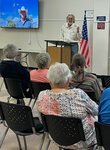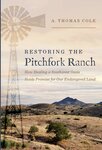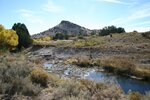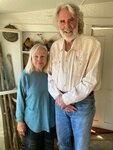Wind: mph,
Welcome to our new web site!
To give our readers a chance to experience all that our new website has to offer, we have made all content freely avaiable, through October 1, 2018.
During this time, print and digital subscribers will not need to log in to view our stories or e-editions.





Off the grid at Pitchfork Ranch A. Thomas Cole and his wife, Lucinda, have been putting their lives into the land. Upon retirement, they bought an 11,393-acre cattle ranch in 2003 with plans to return the land to pre-European settlement conditions. The ranch is located about an hour south of Silver City.
Off grid at the Pitchfork means there is no electricity from outside, windmills and solar provide power. Only recently did the ranch even get good access to phone service.
“We just don’t have any connection with the grid system,” Cole said. “I used to boast to myself, the water is free and the energy free but all six of the wells have gone dry, so we had to drill a well which cost thousands of dollars.”
The work A.T. and Lucinda have been doing on the land over the past two decades “has been a process of restoring the hydrological and ecological function of the land, providing habitat for wildlife and at-risk species and sequestering carbon,” according to a passage in Cole’s book, “Restoring the Pitchfork Ranch How Healing a Southwest Oasis Holds Promise for Our Endangered Land.”
Beginning restoration in 2005, the couple has been able to leverage close to 20-30 different government grants since then. They have only had to subsidize 3 percent of the restoration costs so far.
“They want us to do this,” Cole said. “We have also been turned down (for some grants) too because there are projects more necessary than ours. It turns out there is recent science that up to 37 percent of what we need to do to get carbon count down can be accomplished with natural climate solutions.”
The restoration at the ranch is about returning the land to its original wetland system, a ciénega, defined as an alkaline, freshwater, spongy, wet meadow with shallow-gradient, permanently saturated soils in otherwise arid landscapes that often occupy nearly the entire widths of valley bottoms.
“There were many 100s if not thousands in the 4-corners (states) but as soon as the Spanish arrived and brought all their sheep the destruction began,” Cole said. “Up to 95 percent of the habitat is gone. There are species that evolved in ciénegas, so they require that environment to survive.”
There are four or five causes that desertify the Southwest, he said. There is research that bogs and similar environments capture more atmospheric carbon than oceans, so they are very helpful in contending with the climate crisis.
At the Pitchfork they have marked out 21 places on the river to put grade control structures. Three rows of posts make the water meander instead of moving straight creating a trench. The water spreads out across the land, more like it did in times before man altered the landscape with cattle and sheep.
Cole describes what happened to the southwest as “flipping the historical botanical template from grassland to shrubland.”
“A tree has two-thirds of its body in the ground, grasses are opposite,” he said. “When we (non-indigenous peoples) got here we eliminated fire, fires would kill trees. Grass was adapted to fire, strengthened with fire. When we eliminated fire that flipped. We’ve got these woody shrubland and trees, changing the whole environment.”
The land restoration being done at the ranch can be done my anyone, anywhere, on any size property, Cole said.
Other grant applicants include restoration projects of one kind or another, water courses and riparian areas that need treatment.
Restoration projects don’t have to on 11,000 acres though. For example, Cole said, there is a fellow who has one lot in Silver city and another one who has eight city lots. Also, there are restoration groups people can volunteer to help.
“There is all kind of restoration groups all over the Southwest,” he said. “You will see a lot of things (options). Obviously, most people don’t have the capital to buy land this size and retire at 56, to create a retirement career. There are many numbers of options so everybody can do it.”
Cole said, there are some planet scientists who think we have passed the tipping point where the world can no longer go back, but some say we can.
“One of the things we found out is there is too much gloom and doom,” he said. “The climate crisis has civilization in the cross-hairs. It’s naive to assume the climate crisis is going to take care of itself but naive to think its hopeless.”
According to Cole climate change solutions are centered on five core elements — that the contentions of global warming, species extinction and soil loss are planetary emergencies; that we humans have failed to take these emergencies seriously; that a key solution is to change our inherited, convenient way of living; that an important response is natural climate solutions and restore habitat; and we must take part in what he terms "the Voice of the Streets" to foment "political agitation to transform our destructive way of living .”
“Each one of us needs to recognize we have got some responsibility in this crisis,” he said. “There is not one person who can be absolved from their responsibility. We need to live our lives in a more thrifty, benign, non-carbon producing way.”